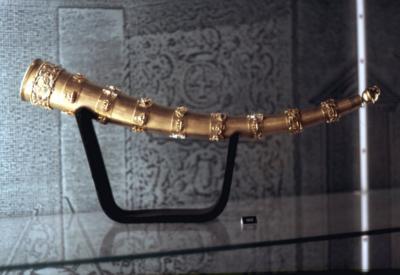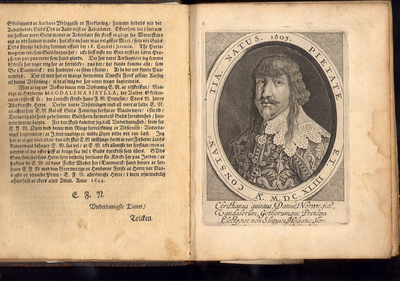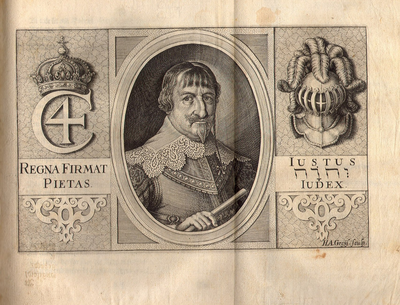Magdalena Sibyllas Golden Horn
Christian 4 gave the long horn which was found in 1639, to his eldest son, also named Christian. He let the horn restore, and thereafter it was used for drinking. Doctor and researcher Ole Worm was the first to describe and make drawings of the gold horn in 1641.
Prince Christian died in 1547, and when his widow, Princess Magdalena Sibylla, remarried in 1652, she had to return the gold horn to the throne. But before that, she had her own horn made and marked with her initials MS and the year 1650.
Like the old horn Magdalena Sibyllas’ horn is decorated with several belts with pictures. But even if the horn has the same form as the original gold horn and also copies the end of the horn, which the prince had add to it, the pictures on the horn is different and obtained elsewhere. The band closest to the mouth of the horn shows killing scenes from the Old Testament: One of the fields represent David and Goliath; another Judith, who cut off the head of Holofernes. Other figures symbolize planets and virtues, such as the Renaissance liked to do it with classical models, and finally, there are several king or prince crowns. The images are decorated with a glaze in many colors and stones are mounted near the mouth of the horn.
The many characters are made in a style that was out of fashion, when the horn was made in 1650. They fit much better in the time before the year 1600. It is obvious that parts of the horn is recycled from other old jewelries, for example, "a necklace with eight virtues and seven planets, decorated with diamonds, rubies and pearls", which we know Magdalena Sibylla brought with them to Denmark.
Magdalena Sibyllas’ horn is now in the Museum Grünes Gewölbe in Dresden.




